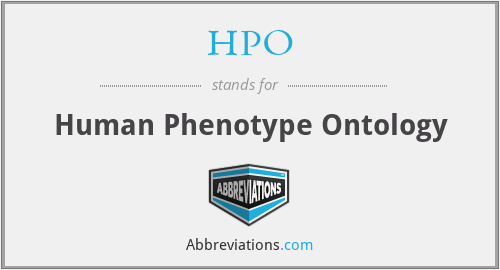We've got 225 shorthands for palæontology »
Acronyms that contain the term palæontology Page #9
What does palæontology mean? This page is about the various possible meanings of the acronym, abbreviation, shorthand or slang term: palæontology.
| Term | Definition | Rating |
|---|---|---|
| HPO | Human Phenotype Ontology | |
| HPO | Human Phenotype Ontology | |
| HPO | Human Phenotype Ontology | |
| HPO | Human Phenotype Ontology | |
| HPO | Human Phenotype Ontology | |
| NCBO | National Center for Biomedical Ontology | |
| LSCOM | Large Scale Concept Ontology for Multimedia | |
| OOO | Object Oriented Ontology | |
| VCO | Vehicle Corporate Ontology | |
| VSO | Vehicle Sales Ontology | |
| BMO | Business Management Ontology | |
| CODA | Common Ontology Development Architecture | |
| COOL | Control Oriented Ontology Language | |
| GOSF | Grid Ontology Service Factory | |
| MULECO | Multilingual Upper Level Electronic Commerce Ontology | |
| OAWS | Ontology Annotated Web Services | |
| OIL | Ontology Interchange Language | |
| OIL | Ontology Inference Layer | |
| OLS | Ontology Lookup Service | |
| OWL | Web Ontology Language | |
| SHOE | Simple Html Ontology Extensions | |
| SWO | Semantic Web Ontology | |
| WOL | Web Ontology Language | |
| WSMO | Web Service Modeling Ontology | |
| XOL | Xml Based Ontology Exchange Language |
What does palæontology mean?
- Palæontology
- Paleontology (), also spelled palaeontology or palæontology, is the scientific study of life that existed prior to, and sometimes including, the start of the Holocene epoch (roughly 11,700 years before present). It includes the study of fossils to classify organisms and study their interactions with each other and their environments (their paleoecology). Paleontological observations have been documented as far back as the 5th century BC. The science became established in the 18th century as a result of Georges Cuvier's work on comparative anatomy, and developed rapidly in the 19th century. The term has been used since 1822 formed from Greek παλαιός ('palaios', "old, ancient"), ὄν ('on', (gen. 'ontos'), "being, creature"), and λόγος ('logos', "speech, thought, study").Paleontology lies on the border between biology and geology, but differs from archaeology in that it excludes the study of anatomically modern humans. It now uses techniques drawn from a wide range of sciences, including biochemistry, mathematics, and engineering. Use of all these techniques has enabled paleontologists to discover much of the evolutionary history of life, almost all the way back to when Earth became capable of supporting life, nearly 4 billion years ago. As knowledge has increased, paleontology has developed specialised sub-divisions, some of which focus on different types of fossil organisms while others study ecology and environmental history, such as ancient climates. Body fossils and trace fossils are the principal types of evidence about ancient life, and geochemical evidence has helped to decipher the evolution of life before there were organisms large enough to leave body fossils. Estimating the dates of these remains is essential but difficult: sometimes adjacent rock layers allow radiometric dating, which provides absolute dates that are accurate to within 0.5%, but more often paleontologists have to rely on relative dating by solving the "jigsaw puzzles" of biostratigraphy (arrangement of rock layers from youngest to oldest). Classifying ancient organisms is also difficult, as many do not fit well into the Linnaean taxonomy classifying living organisms, and paleontologists more often use cladistics to draw up evolutionary "family trees". The final quarter of the 20th century saw the development of molecular phylogenetics, which investigates how closely organisms are related by measuring the similarity of the DNA in their genomes. Molecular phylogenetics has also been used to estimate the dates when species diverged, but there is controversy about the reliability of the molecular clock on which such estimates depend.
Know what is palæontology? Got another good explanation for palæontology? Don't keep it to yourself!
Still can't find the acronym definition you were looking for? Use our Power Search technology to look for more unique definitions from across the web!
Citation
Use the citation options below to add these abbreviations to your bibliography.
Style:MLAChicagoAPA
"palæontology." Abbreviations.com. STANDS4 LLC, 2024. Web. 28 Apr. 2024. <https://www.abbreviations.com/pal%C3%A6ontology>.


Discuss these palæontology abbreviations with the community:
Report Comment
We're doing our best to make sure our content is useful, accurate and safe.
If by any chance you spot an inappropriate comment while navigating through our website please use this form to let us know, and we'll take care of it shortly.
Attachment
You need to be logged in to favorite.
Log In